Adelaide Gaol Prisoner List
Tales from behind bars:
Delving into the fascinating characters and executions at the Goal
Adelaide Gaol Governors
William Baker Ashton: Adelaide Gaol Governor

Ashton died one night while in office at the Gaol. The next morning when he was found, rigor mortis had set in making it impossible to bring his body down the steep narrow staircase from his apartment and he had to be lowered from an outside window.
Maybe, as a result of this embarrassing exit, Ashton is still trying to enforce his authority in the Gaol. It is said that his ghost continues to haunt the Gaol.
Charlotte Ashton arrived in the colony of South Australia with her husband, William Baker Ashton (first Governor of the Gaol) and three children in 1839.
Charlotte worked alongside William in the capacity of Gaol Matron. The role she occupied was unpaid until 1850 when she was officially appointed as Gaol Matron. During this time she gave birth to three more children.
William’s untimely death in April 1854 forced Charlotte to leave the Gaol and seek alternative accommodation. An appeal to raise money for her family resulted in Charlotte obtaining land at Leasingham which she and her sons farmed.
In 1868 Charlotte was granted the licence for the Leasingham Hotel.
After a long illness Charlotte passed away on 29th July, 1894 and was buried in the Auburn Cemetery.
Adelaide Gaol Governors list:
| 1839 | WB Ashton (Adel. Gaol built 1841) |
| 1854 | L Egan |
| 1860 | CJ Lawrence |
| 1873 | J Howell |
| 1897 | T Farrell |
| 1904 | GWH Norcock |
| 1916 | FE Becker |
| 1920 | SR Criddle |
| 1926 | C Molloy |
| 1938 | EA Barbier |
| 1962 | MR Zanker |
| 1964 | RG Taylor |
| 1968 | WA Stewart |
| 1973 | TN Lashbrook |
| 1974 | ST Badcock |
| 1977 | JS Moody |
| 1983 | RH Bonham |
| 1985 | K McCusker |
| 1986 | K Corcoran |
| 1987 | BS Morgan |
Prisoners list: Adelaide Gaol hangings and executions
Below is a list of inmates who were hung at the gallows in Adelaide Gaol. In addition to this, there were five public executions in Adelaide and sixteen executions in various South Australian country locations.
| Executed by hanging |
Date | Location of hanging |
| Joseph Stagg | 18/11/1840 | Portable gallows in front of Gaol main gate |
| Ngarbi | 01/08/1843 | Portable gallows in front of Gaol main gate |
| Wera Maldera | 29/03/1845 | Portable gallows in front of Gaol main gate |
| Thomas Donelly | 29/03/1847 | Portable gallows in front of Gaol main gate |
| James Yates | 05/09/1850 | Portable gallows in front of Gaol main gate |
| William Wright | 12/03/1853 | Portable gallows in front of Gaol main gate |
| William Bell | 27/12/1854 | Portable gallows in front of Gaol main gate |
| Tankawortya (alias Jemmy Alick) | 07/06/1861 | Portable gallows inside Gaol between walls |
| Pitta Miltinda (Pita Miltinda) | 07/06/1861 | Portable gallows inside Gaol between walls |
| Warretya (alias Kapunda Robert) | 07/06/1861 | Portable gallows inside Gaol between walls |
| Warretya (alias Goggleeyed Jemmy) | 07/06/1861 | Portable gallows inside Gaol between walls |
| John Seaver | 11/03/1862 | Portable gallows inside Gaol between walls |
| Malachi Martin | 24/12/1862 | Portable gallows inside Gaol between walls |
| Elizabeth Woolcock | 30/12/1873 | Portable gallows inside Gaol between walls |
| William Ridgeway | 01/01/1874 | Portable gallows inside Gaol between walls |
| Charles Streitman | 24/07/1877 | Portable gallows inside Gaol between walls |
| Hugh Fagan | 16/04/1878 | Portable gallows inside Gaol between walls |
| Jonathon Prest | 16/07/1878 | Portable gallows inside Gaol between walls |
| Williams Burns | 18/01/1883 | Portable gallows inside Gaol between walls |
| Mah Poo | 10/11/1883 | Portable gallows inside Gaol between walls |
| William Brown | 24/08/1894 | Permanent gallows in A Wing (New Bldg) |
| George H Lynch | 06/11/1895 | Permanent gallows in A Wing (New Bldg) |
| Joshua Beard | 10/07/1897 | Permanent gallows in A Wing (New Bldg) |
| Lollie Kaiser Singh | 17/01/1900 | Permanent gallows in A Wing (New Bldg) |
| Thomas Horton | 12/05/1904 | Permanent gallows in A Wing (New Bldg) |
| Albert W Bonfield | 05/01/1905 | Permanent gallows in A Wing (New Bldg) |
| Natalla Habbibulla | 16/11/1906 | Permanent gallows in A Wing (New Bldg) |
| James A Coleman | 02/07/1908 | Permanent gallows in A Wing (New Bldg) |
| John Robins | 16/03/1910 | Permanent gallows in A Wing (New Bldg) |
| Hadji Khan | 05/04/1910 | Permanent gallows in A Wing (New Bldg) |
| Carlos A Bonello | 05/05/1910 | Permanent gallows in A Wing (New Bldg) |
| Percival W Budd | 24/04/1919 | Permanent gallows in A Wing (New Bldg) |
| Alexander N Lee | 15/07/1920 | Permanent gallows in A Wing (New Bldg) |
| William H Francis | 22/11/1927 | Permanent gallows in A Wing (New Bldg) |
| William E P Haines | 16/12/1927 | Permanent gallows in A Wing (New Bldg) |
| Frederick Carr | 12/11/1929 | Permanent gallows in A Wing (New Bldg) |
| Thomas Blyth | 09/01/1930 | Permanent gallows in A Wing (New Bldg) |
| James M Watherston | 11/08/1938 | Permanent gallows in A Wing (New Bldg) |
| Harold J Box | 26/04/1944 | Permanent gallows in A Wing (New Bldg) |
| Charles P O’Leary | 14/11/1946 | Permanent gallows in A Wing (New Bldg) |
| Alfred C Griffin | 22/03/1950 | Permanent gallows in A Wing (New Bldg) |
| John Balaban | 26/08/1953 | Permanent gallows in the Hanging Tower |
| William H Feast | 23/03/1956 | Permanent gallows in the Hanging Tower |
| Raymond J Bailey | 24/06/1958 | Permanent gallows in the Hanging Tower |
| Glen S Valence | 24/11/1964 | Permanent gallows in the Hanging Tower |
Adelaide Gaol Prisoners
Elizabeth Lillian Woolcock: The only woman to be hung in the Adelaide Gaol
Elizabeth Lillian Woolcock was the only woman executed in South Australia. She was convicted of the murder of her husband in 1873.
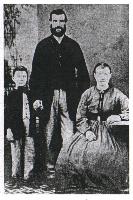
She was married to Thomas Woolcock on 18 February 1867. The marriage was not a happy one. Thomas drank to excess and was also demanding and abusive.
Thomas died under suspicious circumstances on 4 September 1873 after several weeks of illness. A post-mortem established his cause of death as mercury poisoning. The Coroner’s inquest determined that Elizabeth had sent her stepson Tom, under a false name, to buy mercury compounds from local pharmacies. She claimed that she required the compounds to treat head lice.
At her trial, damning medical evidence was presented to show how Elizabeth could have been poisoning her husband over a long period of time. The court also heard testimonies from townspeople about Thomas’ symptoms, their unfortunate marriage and Elizabeth’s reputation for unruly behaviour. Much of this was nothing more than malicious gossip.
Defiant but inarticulate, Elizabeth had little chance of winning the case. The jury took less than half an hour to find her guilty of murder, but because of her youth they recommended mercy. This recommendation was ignored.
A fortnight before her execution, Elizabeth wrote a rambling confession which gave a sad account of her early life and marriage. She wrote that in an evil hour she had yielded to Satan’s temptation, but would die “washed white in the precious blood of Jesus”.
At 8.00 am on 30 December 1873, Elizabeth Woolcock was hanged in the Adelaide Gaol. She was 26 years old. Her body was buried “between walls” and her grave was incorrectly marked as 3EW 31.12.1867. This has since been corrected.
Even in 1873 her punishment was considered harsh. Many regarded her as the victim of a harsh and deprived upbringing rather than a violent criminal.
Elizabeth was the only woman to be executed in South Australia.
John Balaban: Serial killer
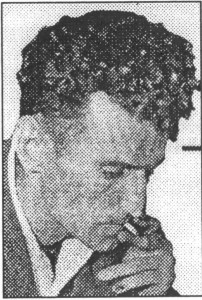
He also savagely attacked a prison warden while awaiting execution in the death cell at the Adelaide Gaol.
John Balaban was executed by hanging at the Adelaide Gaol on 26 August 1953.
His body was interred in the Gaol between the walls in ‘Murderer’s Row’.
Glen Sabre Valance: Rapist and murderer
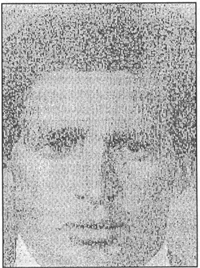
It was claimed that Valance should have been acquitted on the grounds of insanity. At this time, public opinion was building against hanging and there was a world trend toward the abolition of capital punishment.
Glen Sabre Valance was hanged on 24 November 1964. Valance was the last man to hang in South Australia and the second to last in Australia.
Adelaide Gaol prisoner list: Infamous Inmates
Sarah Francisco: Drunk and unruly behaviour
Sarah Francisco was born in Ireland around 1839. She was the daughter of a blacksmith. Her mother died when she was five and she was sent to live with an aunt on a local dairy farm.
The potato famine which devastated Ireland in the decade from 1845 caused over two million people to emigrate and seek a better life. Sarah’s elder sister emigrated to Australia and Sarah followed her shortly after. She arrived in Port Adelaide aboard the Peerless on 7th November 1866. A year later she married John ‘Frank’ Francisco, a seaman from Genoa at Saint Patrick’s Church in Grote Street, Adelaide.
The marriage was an unhappy one. Her husband was violent and a heavy drinker. He once tried to throw Sarah down a well and several times attempted to poison her. She carried a scar across her mouth which was the result of her husband hitting her with a brass candlestick. He took to his bed for three years after coming home one day complaining of a pain in his ankle. When a doctor recommended a two week break away from home, Frank left and never returned. Sarah never saw him again.
The marriage had produced two sons, Joseph and John. Sarah had a passionate love for her sons and she took on the task of sole breadwinner. Setting off at 3.00 am every morning with one child in her arms and the other on her back, she cleaned hotels until 11.00 pm, or took on any job that would keep the three of them fed and clothed.
A tragic accident which resulted in the death of her beloved five year old son John was the beginning of her downward spiral into drunkenness.
Sarah soon became one of the Adelaide Gaol’s most notorious inmates. She amassed a total of 295 convictions resulting from her drunkenness and unruly behaviour. Her first conviction was in 1872. Subsequent convictions included drunkenness, indecent language, assault, resisting arrest, riotous behaviour, abusive language and disturbing the peace.
Sarah had her ‘own cell’ in Adelaide Gaol’s 2 Yard. When Sarah arrived in the Gaol she would ‘evict’ the current occupant of ‘her cell’ who then had to find alternative accommodation. On one occasion she threw a tantrum and kicked a prison officer because she couldn’t have her usual cell. Her behaviour earned her another 14 days in gaol.
Sarah spent over 16 years in Adelaide Gaol in short sentences, she was sentenced to 12 months five times and spent 12 Christmas Days in gaol. Many of her sentences were served concurrently. If she had served her full terms of imprisonment she would have spent over 180 years in gaol!
In her early seventies she was visited by members of the Salvation Army and decided to reform her ways. She became an enthusiastic supporter of the Salvation Army.
Although she had relapses she was never arrested again.
Sarah died on 2nd November 1916 at the age of 77 and is buried in the Cheltenham Cemetery.
Rupert Maxwell Stuart: Rapist and murderer
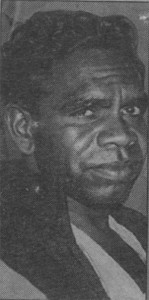
The illiterate Stuart was sentenced to the gallows; however he was reprieved seven times, once only hours before facing the noose. During the following 12 months the case became one of the most sensational in SA’s criminal and political history. The News, one of South Australia’s newspapers, spearheaded a campaign to take on the might of the judiciary and State government in an effort to get justice for Stuart.
A Royal commission was eventually held to appease a divided population. The Royal Commission found the case against Stuart was valid but the then Premier Tom Playford commuted the death sentence to life imprisonment.
Stuart served most of his time in Yatala Prison. The time he spent at Adelaide Gaol was mostly while his parole breaches and sentencing was being reviewed.
Stuart still maintains his innocence, claiming the confession was ‘bashed’ out of him by the police.
You can see Stuart’s cell in 4 Yard.
Read about other Adelaide Gaol prisoners and their stories.
- Fredrick Wilson – A Case of Fraud – 1853
- John Seaver – Executed March 1862
- Mary Ann & John McKeen – Both sides of the Law 1860-1943
- Mah Poo – The Cess Pit Murder – 1883
- A Notable Escape – 1897
- The Knightsbridge-Kensington Murder – An Unsolved Crime 1909
- The Hindmarsh Square Shooting – 1929
- Thomas Donelly – Executed March 1847
- Robert Johnston – Executed November 1881
- Natalla Nabibulla – Executed November 1906
- James Albert Coleman – Executed July 1908
Adelaide Gaol Benefactors
Sister Mary MacKillop: Consoling the inmates
Sister Mary MacKillop. An enormous amount has already been written about Mary MacKillop, Australia’s only saint. However, many people are not aware of her association with the Adelaide Gaol.
Mary MacKillop and the Sister’s of Saint Joseph were often seen at the Gaol and had an influence over the prisoners that no other agency could command. They helped to reform prisoners and deter them from a life of crime. Many female prisoners were helped with practical housekeeping instructions and taught sewing, cooking and knitting. This gave them an alternative means of employment to that of prostitution.
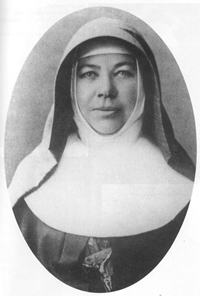
Mary MacKillop and sister Felicitas visited Fagan although they had been warned not to. The two nuns knelt and prayed in Fagan’s cell and as they did so Mother Mary began to cry. Although he had been very abrupt with the nuns at first Fagan was moved by Mother Mary’s grief and knelt beside them and joined in their prayers.
Mother Mary convinced Fagan to allow a priest to hear his confession and to receive Holy Communion.
On the day of Fagan’s execution Mother Mary offered to climb the scaffold with him but the authorities would not allow it.
Another prisoner ‘Scotch Bella’ was also helped by Mary. Later, when ‘Bella’ was released from gaol she went to live under Mary’s protection. Later she was baptised, married and went on to lead a positive and productive life.
Salvation Army: Helping prisoners to reform
 Salvation Army
Salvation Army
The Salvation Army, from its inception as a Corps in Port Adelaide in late 1882, was often to be seen ministering in lockups and prisons around the state.
The Adelaide Gaol was no exception. The Salvation Army held regular services in the Gaol Chapel and spent many hours visiting prisoners and offering comfort and advice to any who required their help.
During their association with the Adelaide Gaol, The Salvation Army helped many prisoners and ex-prisoners reform from either alcoholism or criminal activity.
Adelaide Gaol books
AGPS sell a wide range of books about the Adelaide Gaol which will provide you with a detailed history of the Gaol.
These books can be purchased directly from the AGPS by sending an email to admin@adelaidegaol.org.au
| Book Title | Author | Price |
| A Governor, aye every inch a Governor | Malcolm David Johnston | $15.00 |
| Dead Woman Walking | Allen L Peters | $24.50 |
| Elizabeth Woolcock Recipes | Allen L Peters | $10.00 |
| Executions – Victoria | Trevor J Porter | $12.00 |
| Fly with the Eagles | G.S. Valance | $25.00 |
| Gaol Ghosts – The Residents | Trevor J Porter | $12.00 |
| History of the SA Police Force | Historic Society | $5.00 |
| Inman: First Commander of the SA Police | Max Slee | $30.00 |
| Inside (A Brief History of the Gaol) | Sue Scheiffers | $28.00 |
| SA Convicts Sentenced to Transportation | Graham Jaunay | $10.00 |
| Notable SA Crimes | Trevor J Porter | $12.00 |
| Recollections | Edited by BA Peter | $15.00 |
| SA Police 1838-2003 | Chas Hopkins | $24.00 |
| Seven Lengths of Rope | Trevor J Porter | $12.00 |
| Tales of the Troopers | Jean Schmaal | $15.00 |
| The Hempen Collar | David J Towler & Trevor J Porter | $16.50 |
| The Rainbird Murders | Peter Liddy | $10.00 |
| Time Line | Tony Hanchant Nichols | $12.00 |
| To Walk a Fair Beat | Patricia Higgs & Christine Bettess | $30.00 |
| True & Infamous Crimes (Aust. & NZ) | Allen L Peters | $29.50 |
| Visitors Guide Book (Green) | Adelaide Gaol Preservation Socy. | $5.00 |
| Tormented Soul | L Clavell | $24.50 |
| Adelaide, a Brief History | Susan Marsden | $12.50 |
| Adelaide’s First Gaol | Max Slee | $10.00 |
Book Your Adelaide Gaol Tour Here
Booking your Adelaide Gaol tour is quick and easy with our online booking system.

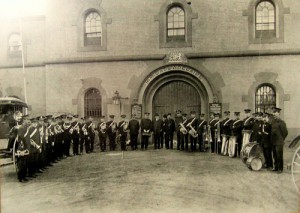 Salvation Army
Salvation Army